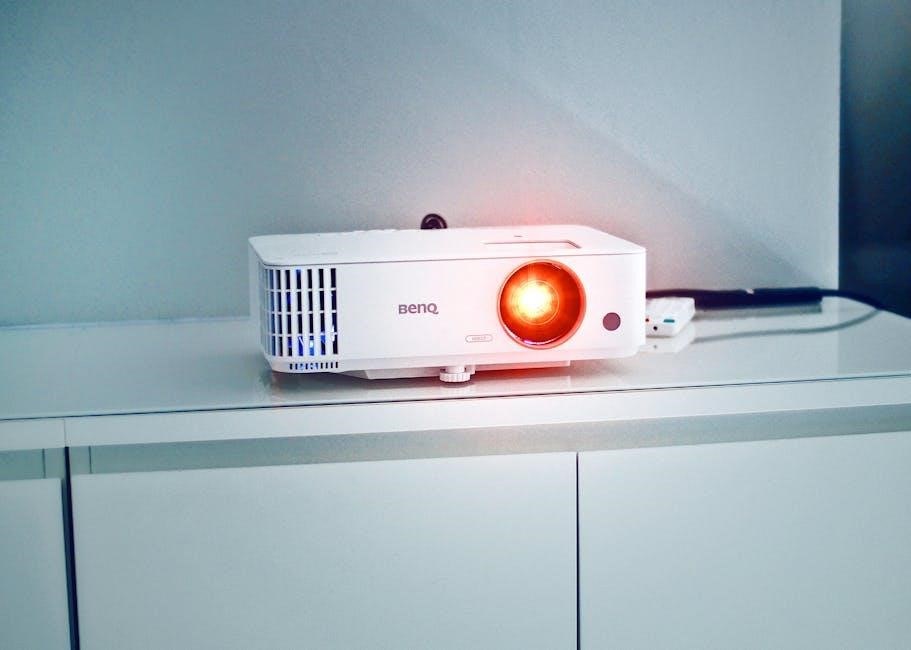Solar lighting systems represent a sustainable and cost-effective illumination solution, gaining traction globally as detailed in recent market analyses from December 6, 2021.
These systems, including inverters and charge controllers, adhere to NEC guidelines for safe installation and performance, ensuring reliability and longevity.
From rural electrification initiatives in Uttarakhand to public lighting for monuments, solar power offers versatile applications, as highlighted by various reports from April 14, 2025.
The Consortium for Solar Lighting (CSL) addresses industry standards, while Simple Solar Day Lamps (SDLs) provide cost reduction, demonstrating the broad impact of this technology.
The global market is experiencing significant growth, valued at USD 8.32 billion in 2025, with detailed insights available in comprehensive design guides and user manuals.
What are Solar Lighting Systems?
Solar lighting systems are self-contained illumination solutions powered by renewable energy derived directly from the sun. These systems diverge from traditional grid-tied lighting by eliminating or minimizing reliance on conventional electricity sources. They encompass a range of applications, from small Simple Solar Day Lamps (SDLs) designed for basic indoor lighting to larger, more complex installations powering public spaces and healthcare centers.
Fundamentally, a solar lighting system comprises solar panels that convert sunlight into direct current (DC) electricity. This DC power is then managed by a charge controller, which regulates the charging of batteries for energy storage. LED lights, known for their efficiency and longevity, utilize this stored energy to provide illumination. In some systems, inverters or converters are employed to transform DC power into alternating current (AC) for compatibility with standard appliances.
These systems are increasingly popular due to their environmental benefits and potential for cost savings, as evidenced by growing market trajectories and adherence to NEC guidelines for safe operation.

Benefits of Using Solar Lighting
Solar lighting systems offer a compelling array of advantages, making them increasingly attractive alternatives to conventional lighting. A primary benefit is cost reduction, particularly through solutions like Simple Solar Day Lamps (SDLs), which minimize monthly power bills. Beyond economics, solar lighting champions environmental sustainability by reducing carbon footprints and reliance on fossil fuels.
Rural electrification projects, such as those in Uttarakhand, demonstrate the power of solar lighting to provide access to illumination in areas lacking grid connectivity. Furthermore, these systems offer energy independence, shielding users from fluctuating electricity prices and potential outages. The longevity of LED lights minimizes maintenance and replacement costs.

Adherence to NEC guidelines and industry standards, promoted by organizations like the Consortium for Solar Lighting (CSL), ensures safety and reliability. The expanding global market reflects growing recognition of these benefits, with a market valued at USD 8.32 billion in 2025.

Components of a Solar Lighting System
Solar lighting systems integrate solar panels, LED lights, charge controllers, batteries, and potentially inverters or converters, all working harmoniously.
These components adhere to NEC and CSL standards for optimal performance and safety.
Solar Panels: Types and Efficiency
Solar panels are the cornerstone of any solar lighting system, converting sunlight into usable electricity. Several types exist, each with varying efficiencies and cost considerations.
Monocrystalline panels, known for their high efficiency (often exceeding 20%), are fabricated from a single silicon crystal, resulting in a sleek, dark appearance.
Polycrystalline panels, slightly less efficient (typically 15-17%), are produced by melting multiple silicon fragments, presenting a speckled blue hue and a more affordable price point.
Thin-film panels, utilizing materials like amorphous silicon, offer flexibility and lower costs but generally exhibit lower efficiencies (around 10-13%).
Efficiency is crucial, impacting the panel’s ability to generate power in limited sunlight or space. Factors like temperature and shading also affect performance, necessitating careful consideration during system design, adhering to NEC guidelines.
Selecting the appropriate panel type depends on specific energy needs, budget constraints, and available space, as detailed in comprehensive user manuals.
LED Lights: Lumens, Wattage, and Lifespan
LED (Light Emitting Diode) lights are the preferred illumination source for solar lighting systems due to their energy efficiency and longevity. Understanding lumens, wattage, and lifespan is crucial for optimal system design.
Lumens measure the total amount of visible light emitted, determining brightness. Higher lumens equate to brighter light. Wattage indicates power consumption; LEDs consume significantly less wattage than traditional bulbs for the same lumen output.
This efficiency is vital for maximizing runtime in off-grid solar applications. LED lifespan, often exceeding 50,000 hours, dramatically reduces maintenance and replacement costs.
Choosing the right LED involves balancing brightness needs (lumens) with power consumption (wattage) and long-term reliability (lifespan). Some designs, like LEDs in jars, offer unique aesthetic options.
Proper selection, guided by design guides, ensures optimal performance and aligns with industry standards for solar lighting.
Charge Controllers: PWM vs. MPPT
Charge controllers are essential components in solar lighting systems, regulating voltage and current from the solar panels to the batteries, preventing overcharging and extending battery life. Two primary types exist: PWM (Pulse Width Modulation) and MPPT (Maximum Power Point Tracking).
PWM controllers are simpler and less expensive, suitable for smaller systems where panel voltage closely matches battery voltage. They operate by connecting and disconnecting the panel, effectively modulating the charging pulse.
MPPT controllers, however, are significantly more efficient, especially in colder climates or with higher voltage panels. They actively track the maximum power point of the solar panel, optimizing energy harvest.
This optimization can yield up to 30% more power, crucial for maximizing runtime and system performance. Adherence to NEC guidelines ensures safe and efficient operation of these controllers.
Selecting the appropriate controller, detailed in user manuals, is vital for system longevity and overall effectiveness.
Batteries: Deep Cycle and Lithium-Ion Options
Batteries are the energy storage component of solar lighting systems, crucial for providing power when sunlight is unavailable. Two dominant battery technologies are Deep Cycle and Lithium-Ion.
Deep Cycle batteries, traditionally lead-acid, are designed for repeated charge and discharge cycles, offering a cost-effective solution for many applications. However, they are heavier and have a limited lifespan compared to newer technologies.
Lithium-Ion batteries are increasingly popular due to their higher energy density, lighter weight, and longer lifespan. They offer superior performance but come at a higher initial cost.
Proper battery selection, guided by design guides, is critical for system reliability and performance. NEC guidelines dictate safe installation and maintenance practices.
Choosing between these options depends on budget, weight constraints, and desired system longevity, ensuring optimal energy storage for various applications.
Inverters and Converters: Powering AC Loads
Inverters and Converters are essential components when solar lighting systems need to power alternating current (AC) loads. Solar panels generate direct current (DC) electricity, which many devices require converted to AC.
Inverters transform DC power into AC power, enabling the operation of standard household appliances and lighting. Their efficiency and power rating must be carefully matched to the load requirements.
Converters, on the other hand, adjust DC voltage levels, optimizing power transfer within the system. They are crucial for matching the solar panel output to the battery charging voltage.
Both inverters and converters must adhere to NEC guidelines for safety and performance, ensuring reliable operation and preventing electrical hazards. Proper selection is detailed in user manuals.
Choosing the right inverter or converter is vital for efficient and safe operation, maximizing the benefits of a solar lighting system.

Solar Lighting System Design & Installation
Effective design involves calculating power needs and proper mounting of panels, while safe wiring and adherence to NEC guidelines are paramount for optimal performance.
Sizing the System: Calculating Power Needs
Accurately determining the energy requirements is fundamental to a successful solar lighting system. This begins with identifying all loads – lights, and potentially other devices – and their respective wattage consumption.
Calculate daily energy usage by multiplying each device’s wattage by its operating hours, then summing these values. This yields the total watt-hours needed per day.
Consider system losses, accounting for inefficiencies in the inverter, charge controller, and wiring, typically around 20-30%. Increase the calculated energy demand to compensate.
Factor in autonomy – the number of days the system must operate without sunlight. Multiply the daily energy demand by the desired autonomy days to determine total battery capacity.
Finally, size the solar panel array to generate sufficient energy to recharge the batteries, considering local sunlight hours and panel efficiency. Detailed design guides and user manuals provide formulas and tools for precise calculations.
Mounting Solar Panels: Location and Angle
Optimal panel placement is crucial for maximizing energy capture. Prioritize locations with unobstructed sunlight throughout the day, avoiding shadows from trees or buildings.
Panel angle significantly impacts performance. Generally, an angle equal to the latitude provides good year-round output. Adjust seasonally for peak efficiency – steeper in winter, shallower in summer.
Secure mounting is essential, resisting wind and weather. Use appropriate racking systems designed for the panel type and roof or ground conditions.
Consider orientation; in the Northern Hemisphere, south-facing panels receive the most sunlight. Adjust slightly east or west based on specific energy needs.
Refer to design guides for detailed instructions and local regulations regarding mounting structures. Proper installation, as outlined in user manuals, ensures safety and longevity of the system.
Wiring and Connections: Safety Considerations
Electrical safety is paramount when installing solar lighting systems. Always disconnect power sources before working on wiring. Utilize appropriately sized wiring for the current and voltage levels.
Proper grounding is essential to prevent electrical shock and protect equipment. Follow NEC guidelines meticulously for grounding procedures.
Waterproof connections are vital, especially for outdoor components. Use weatherproof connectors and sealant to prevent corrosion and short circuits.
Label all wiring clearly for easy identification and future maintenance. Adhere to color-coding standards for positive and negative leads.
Consult user manuals and design guides for specific wiring diagrams and safety instructions. Incorrect wiring can damage components and create hazardous conditions. Prioritize safety throughout the installation process.
Standards and Regulations
NEC guidelines and industry standards, like those from the Consortium for Solar Lighting (CSL), ensure safe and reliable system installation and performance.
These regulations cover photovoltaic systems, including solar lighting, prioritizing safety and adherence to established protocols for optimal functionality.
NEC Guidelines for Solar Lighting Systems
The National Electrical Code (NEC) provides crucial guidelines for the safe installation and use of solar lighting systems, encompassing all components from panels to wiring. This section of the NEC specifically addresses photovoltaic (PV) systems, ensuring compliance with safety standards and minimizing potential hazards.
Key areas covered include proper grounding techniques to prevent electrical shock, appropriate wiring methods for outdoor environments, and requirements for overcurrent protection to safeguard against short circuits and overloads. The NEC also details specific regulations for disconnecting means, allowing for safe maintenance and emergency shutdown of the system.
Furthermore, the code outlines requirements for labeling and signage, clearly identifying system components and warning of potential electrical hazards. Adherence to these guidelines is paramount for ensuring the longevity, reliability, and, most importantly, the safety of any solar lighting installation, protecting both installers and end-users.
Industry Standards & Consortium for Solar Lighting (CSL)
The solar lighting industry, while rapidly growing, previously lacked unified standards – a gap the Consortium for Solar Lighting (CSL) directly addresses. Founded to foster best practices, the CSL released standards aimed at improving system performance, reliability, and interoperability.
These standards cover critical aspects like testing methodologies, performance metrics, and quality control procedures for various system components, including panels, lights, and controllers. The CSL’s work promotes consumer confidence and facilitates market growth by establishing a baseline for product quality and safety.
By collaborating with manufacturers, researchers, and policymakers, the CSL aims to accelerate the adoption of solar lighting globally. Their initiatives contribute to a more robust and trustworthy industry, ensuring that solar lighting systems consistently meet expectations and deliver long-term value.

Market Trends and Future Outlook
The global solar lighting systems market is experiencing substantial growth, reaching USD 8.32 billion in 2025, with continued expansion anticipated due to increasing sustainability demands.
Recent trajectory analyses indicate a positive outlook, driven by rural electrification projects and advancements in technology, as reported on December 6, 2021.
Global Solar Lighting Systems Market Trajectory
The global solar lighting systems market is demonstrating a robust and upward trajectory, as evidenced by reports released on December 6, 2021. This growth is fueled by increasing awareness regarding sustainable energy solutions and declining costs associated with solar technology.
Market analysis indicates a significant expansion driven by applications in rural electrification, particularly within healthcare centers like those in Yamkeshwar, Uttarakhand, where solar power is actively being implemented. Furthermore, the demand for public lighting solutions, including illuminating monuments and open spaces, is contributing to market growth.
The Consortium for Solar Lighting (CSL) is actively working to establish industry standards, which will likely further accelerate adoption. The market is expected to continue its positive momentum, propelled by government initiatives and a growing consumer preference for eco-friendly alternatives.
Detailed insights into this trajectory are available through comprehensive market research reports.

Solar Lighting System Market Size and Growth Insights
According to the SNS Insider Report, released on April 14, 2025, the Solar Lighting System Market was valued at USD 8.32 billion in 2025. This substantial valuation underscores the increasing global demand for sustainable and efficient lighting solutions.
Analysts predict continued significant growth in the coming years, driven by factors such as decreasing component costs, supportive government policies promoting renewable energy, and a rising awareness of environmental concerns. The market benefits from diverse applications, ranging from rural electrification projects to public infrastructure improvements.
The expansion is particularly notable in developing regions where access to traditional grid electricity is limited. Furthermore, the adoption of Simple Solar Day Lamps (SDLs) for cost reduction contributes to overall market volume. Detailed market trajectory and analytics reports provide comprehensive insights into these trends.

Applications of Solar Lighting Systems
Solar lighting powers rural electrification and healthcare centers in Uttarakhand, illuminates monuments and open spaces like Qormi, and offers cost reduction via SDLs.
These systems demonstrate versatility, addressing diverse needs from basic illumination to enhancing public areas, showcasing broad applicability.
Rural Electrification and Healthcare Centers
Solar lighting systems are proving transformative in providing access to electricity in remote rural communities, particularly benefiting healthcare centers lacking reliable grid connections.
The Shree Shakti Consciousness Foundation (SSCF) recently completed the second phase of solar power electrification for Primary Health Care Centres in Yamkeshwar, Uttarakhand, demonstrating a practical application.
These systems ensure consistent power for essential medical equipment, refrigeration of vaccines, and improved lighting for nighttime procedures, significantly enhancing healthcare delivery.
Beyond healthcare, rural electrification through solar lighting fosters economic development, enabling educational opportunities, and improving the overall quality of life for residents.
The independence from fossil fuels and reduced reliance on expensive and often unreliable diesel generators makes solar lighting a sustainable and cost-effective solution for these critical facilities.
This approach aligns with global efforts to expand access to clean energy and improve health outcomes in underserved populations.
Public Lighting: Monuments and Open Spaces
Solar lighting systems are increasingly utilized for illuminating public spaces, including historical monuments and recreational areas, offering a sustainable alternative to traditional grid-connected lighting.
The Qormi local council in Malta was recently praised for implementing a solar lighting system for a monument and open space, showcasing a commitment to eco-friendly infrastructure.
These systems enhance the visibility and safety of public areas during nighttime hours, while simultaneously reducing energy consumption and carbon emissions.
Solar-powered lights can be strategically placed to highlight architectural features, create inviting atmospheres, and promote community engagement.
The off-grid nature of these systems eliminates the need for extensive trenching and wiring, minimizing disruption and installation costs.
Furthermore, they offer a resilient lighting solution, unaffected by power outages or grid failures, ensuring continuous illumination for public safety and enjoyment.
Simple Solar Day Lamps (SDL) for Cost Reduction
Simple Solar Day Lamps (SDLs) represent a remarkably affordable entry point into solar lighting, specifically designed to minimize monthly electricity bills for households and communities.
These lamps, characterized by their straightforward design, typically lack energy storage components like batteries, resulting in a lower initial investment.
However, this simplicity means light intensity fluctuates with sunlight availability, a noted drawback, but acceptable for basic daytime illumination needs.
SDLs are particularly impactful in regions with limited access to grid electricity or where energy costs are prohibitively high.

They offer a practical solution for basic lighting requirements, such as reading, studying, or performing simple tasks during daylight hours.
The cost-effectiveness of SDLs makes them an accessible option for low-income families, promoting energy independence and improved quality of life.

Resources and Documentation
User manuals and comprehensive design guides are crucial for effective solar lighting system implementation, offering detailed instructions and best practices for optimal performance.
Accessing these PDF resources ensures safe installation, efficient operation, and maximized benefits from your investment in sustainable illumination solutions.
User Manuals and Design Guides
User manuals for solar lighting systems are indispensable resources, providing step-by-step instructions for installation, operation, and maintenance. These PDF documents typically cover component identification, wiring diagrams, troubleshooting tips, and safety precautions, ensuring users can effectively manage their systems.
Design guides, also frequently available as PDF downloads, offer more in-depth technical information. They detail system sizing calculations, optimal panel mounting angles, and considerations for various environmental factors. These guides often reference NEC guidelines and industry standards established by organizations like the Consortium for Solar Lighting (CSL).
Accessing these resources is vital for maximizing system efficiency, ensuring longevity, and adhering to safety regulations. Properly utilizing these PDF documents empowers users to troubleshoot issues, perform routine maintenance, and optimize their solar lighting investment for long-term performance and cost savings.